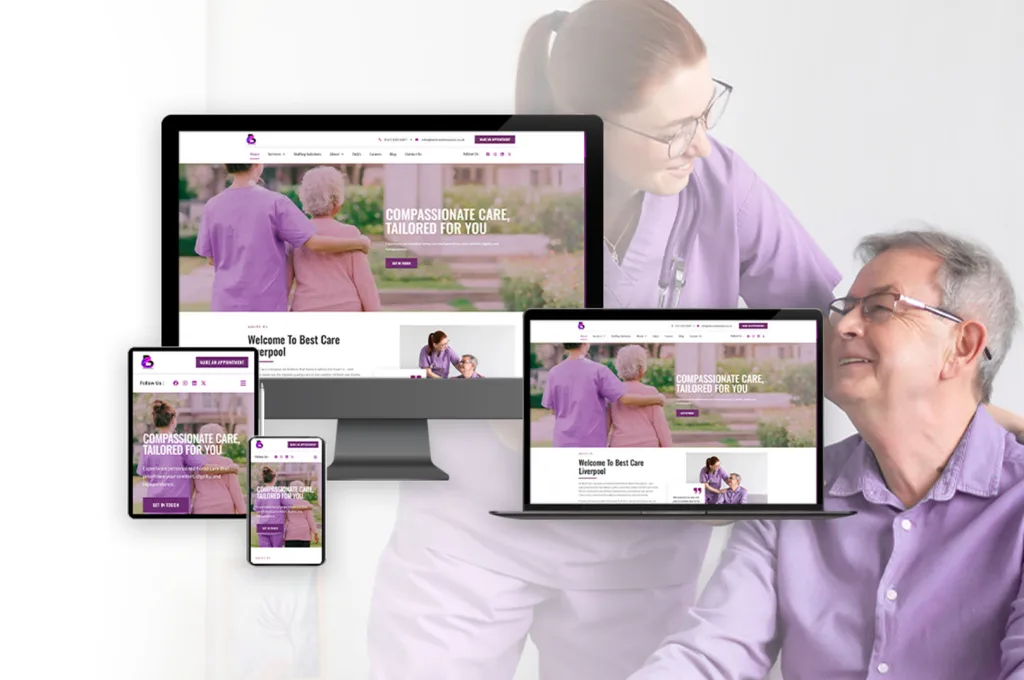The impact of website design on brand identity and customer trust
Introduction
The website design of a business is a key factor in creating a strong brand identity and customer trust. A website is often the first point of contact between a business and its customers, and it is essential that the design of the website reflects the values and goals of the business. A well-designed website can help to create a positive impression of the business, while a poorly designed website can have a negative impact on the brand identity and customer trust. This article will explore the impact of website design on brand identity and customer trust, and how businesses can use website design to create a strong brand identity and build customer trust.

How Website Design Can Help Build Brand Identity and Increase Customer Trust
A website is a powerful tool for businesses to build their brand identity and increase customer trust. Through website design, businesses can create a unique and memorable experience for their customers that will help them stand out from the competition.
The design of a website is the first impression customers have of a business, and it can have a significant impact on how they perceive the company. A well-designed website should be visually appealing, easy to navigate, and provide customers with the information they need. It should also reflect the company’s brand identity and values. By creating a website that is consistent with the company’s brand, businesses can create a strong and recognizable presence online.
In addition to creating a strong brand identity, website design can also help to increase customer trust. Customers are more likely to trust a business if they have a positive experience on their website. This means that the website should be secure, easy to use, and provide customers with the information they need. A website should also be optimized for mobile devices, as more and more customers are using their phones to access websites.
Finally, website design can help businesses build relationships with their customers. By providing customers with a personalized experience, businesses can create a sense of loyalty and trust. This can be done through features such as personalized product recommendations, customer reviews, and customer support.
By utilizing website design to create a strong brand identity and increase customer trust, businesses can create a positive online presence that will help them stand out from the competition.
The Benefits of Investing in Professional Website Design for Brand Identity and Customer Trust
Having a professional website design is essential for any business that wants to establish a strong brand identity and build customer trust. A website is often the first point of contact between a business and its customers, and it is important to make a good first impression. Professional website design can help to create a positive image of the business and build trust with customers.
A professional website design will ensure that the website is easy to navigate and visually appealing. It should be designed with the user in mind, so that customers can find the information they need quickly and easily. A well-designed website will also be optimized for search engines, so that customers can find the business more easily. This will help to increase traffic to the website and create more opportunities for customers to interact with the business.
A professional website design will also help to create a strong brand identity. The website should be designed to reflect the values and mission of the business, and it should be consistent with the company’s other marketing materials. This will help to create a unified brand image that customers can recognize and trust.
Professional website design can also help to build customer trust. Customers want to know that they can trust the business they are dealing with, and a professional website design can help to demonstrate that the business is reliable and trustworthy. The website should be secure, and it should provide customers with the information they need to make informed decisions.
In conclusion, investing in professional website design is essential for any business that wants to establish a strong brand identity and build customer trust. A well-designed website will be easy to navigate, visually appealing, and optimized for search engines. It should also reflect the values and mission of the business and be consistent with the company’s other marketing materials. Finally, a professional website design will help to demonstrate that the business is reliable and trustworthy, which will help to build customer trust.
The Role of Visual Design in Establishing Brand Identity and Customer Trust
Visual design plays an important role in establishing brand identity and customer trust. It is the visual representation of a company’s values, mission, and goals. Through visual design, companies can create a unique and recognizable brand identity that customers can easily recognize and trust.
Visual design is the first thing customers see when they come into contact with a company. It is the visual representation of the company’s values, mission, and goals. It is the first impression customers have of the company and it can make or break their trust in the company. A well-designed logo, website, and other visual elements can create a strong and positive impression of the company and help to build customer trust.
Visual design also helps to create a consistent brand identity. A consistent brand identity helps customers to recognize the company and its products or services. It also helps to create a sense of familiarity and trust. Customers are more likely to trust a company that has a consistent brand identity.
Finally, visual design can help to create an emotional connection with customers. Through the use of colors, shapes, and other visual elements, companies can create an emotional connection with customers. This emotional connection can help to build customer trust and loyalty.
In conclusion, visual design plays an important role in establishing brand identity and customer trust. It is the visual representation of a company’s values, mission, and goals. Through visual design, companies can create a unique and recognizable brand identity that customers can easily recognize and trust. It also helps to create a consistent brand identity and an emotional connection with customers. All of these elements help to build customer trust and loyalty.
How to Use Color Psychology to Enhance Brand Identity and Customer Trust Through Website Design
Color psychology is an important factor to consider when designing a website. It can be used to enhance brand identity and build customer trust. By understanding the psychological effects of color, website designers can create a website that is visually appealing and emotionally engaging.
First, it is important to understand the basics of color psychology. Colors evoke different emotions and associations in people. For example, red is often associated with energy and excitement, while blue is associated with trust and reliability. By understanding the psychological effects of color, website designers can create a website that is visually appealing and emotionally engaging.
Second, website designers should consider the colors that are associated with their brand. Different colors can evoke different emotions and associations. For example, a company that specializes in luxury products may want to use colors such as gold and silver to evoke feelings of wealth and sophistication. On the other hand, a company that specializes in outdoor products may want to use colors such as green and brown to evoke feelings of nature and adventure.
Third, website designers should consider how colors can be used to create a sense of trust and security. Colors such as blue and green are often associated with trust and security, while colors such as red and yellow can be used to create a sense of urgency and excitement. By using colors strategically, website designers can create a website that is visually appealing and emotionally engaging.
Finally, website designers should consider how colors can be used to create a sense of unity and consistency. By using the same colors throughout the website, website designers can create a unified and consistent look and feel. This can help to create a sense of trust and security in the customer, as they will know that the website is reliable and trustworthy.
By understanding the psychological effects of color, website designers can create a website that is visually appealing and emotionally engaging. By using colors strategically, website designers can enhance brand identity and build customer trust. By creating a unified and consistent look and feel, website designers can create a sense of trust and security in the customer. By understanding the basics of color psychology, website designers can create a website that is visually appealing and emotionally engaging.
The Impact of Responsive Website Design on Brand Identity and Customer Trust
The advent of responsive website design has revolutionized the way businesses interact with their customers. Responsive website design is a type of web design that allows websites to adapt to the size of the user’s device, providing an optimal viewing experience regardless of the device being used. This type of design has become increasingly popular in recent years, as it allows businesses to create a consistent brand identity across all devices and platforms.
Responsive website design has a significant impact on brand identity and customer trust. By creating a consistent brand identity across all devices, businesses can ensure that their customers have a positive experience regardless of the device they are using. This helps to build trust with customers, as they know that they can rely on the same quality of service regardless of the device they are using. Additionally, responsive website design allows businesses to create a more engaging and interactive experience for their customers. This helps to create a stronger connection between the customer and the brand, which can lead to increased customer loyalty and trust.
Responsive website design also helps to improve the overall user experience. By providing an optimized viewing experience, customers are able to access the information they need quickly and easily. This helps to reduce customer frustration and increases the likelihood that they will return to the website in the future. Additionally, responsive website design helps to improve the overall search engine optimization of a website, as search engines are able to crawl and index the website more effectively. This can lead to increased visibility in search engine results, which can help to drive more traffic to the website.
In conclusion, responsive website design has a significant impact on brand identity and customer trust. By creating a consistent brand identity across all devices, businesses can ensure that their customers have a positive experience regardless of the device they are using. Additionally, responsive website design helps to improve the overall user experience and search engine optimization of a website, which can lead to increased visibility in search engine results and more traffic to the website.
Conclusion
The impact of website design on brand identity and customer trust is undeniable. A website’s design can be the difference between a successful business and one that fails. It is important for businesses to create a website that is visually appealing, easy to navigate, and conveys the company’s message clearly. Additionally, businesses should ensure that their website is secure and trustworthy, as this will help to build customer trust and loyalty. Ultimately, website design is an essential part of creating a strong brand identity and building customer trust.







